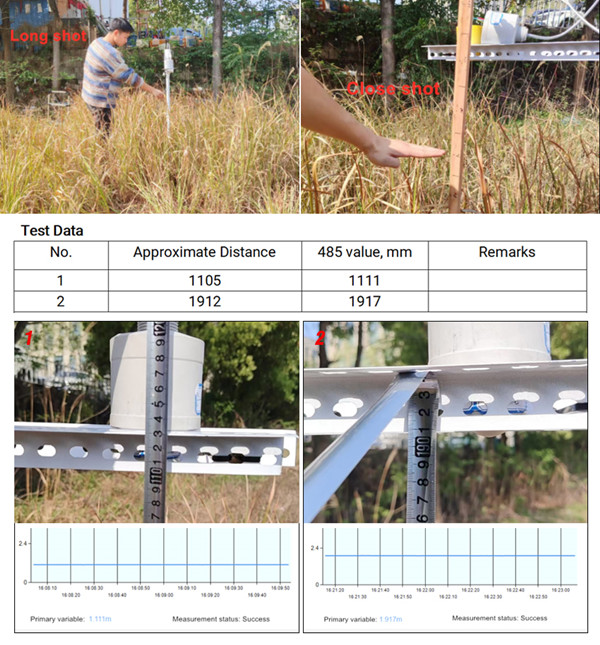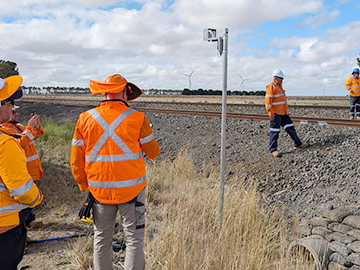Will the Grass Interfere With HR2000 Radar Level Sensor Reading Water Level?
One of the most common challenges in outdoor water level monitoring is the presence of grass. A recent inquiry from one of our clients raised an interesting question: Will the grass interfere with the HR2000 radar level sensor reading water level?
How Does the HR2000 Radar Level Sensor Work?
The HR2000 radar level sensor operates using frequency-modulated continuous wave (FMCW) technology, which allows it to emit a radar signal that reflects off the water surface and returns to the sensor. The time delay between transmission and reception is used to calculate the water level with high accuracy. Unlike ultrasonic sensors, radar sensors are less affected by environmental factors such as temperature changes, wind, and humidity. But how does the grass impact this measurement?
Can Grass Obstruct Radar Signals?
In general, radar signals can pass through certain non-metallic obstacles, such as mist, and light vegetation. However, when the vegetation is dense, wet, or positioned directly in the radar beam’s path, it may cause signal scattering or absorption, potentially leading to inaccurate readings.
To verify this, we did two tests.
Test 1: Low-Density Grass
In an environment with sparse grass, the sensor successfully detected the water level with minimal deviation.
The readings remained consistent and accurate, confirming that light vegetation does not significantly interfere with radar measurement.
We kept moving the radar to change the installation height, and the test data were below:


Test 2: High-Density Grass
In an area with thicker, denser grass, the sensor started returning inconsistent readings.
The grass partially blocked and scattered the radar signal, causing occasional measurement errors.
Our client mounted the HR2000 sensor at the top of the pole and is used to measure flood water level in the drain. And the long sparse grass around the installation site does not impact the accuracy of the readings. They are quite satisfied with this ability. Here’s a photo of an installation where there is grass around the sensor:
<

How to Optimize Radar Sensor Performance in Vegetated Areas
If your installation site has surrounding low density vegetation, consider the following best practices to ensure optimal sensor performance:
Increase Mounting Height: Raising the HR2000 sensor above the vegetation allows a clearer line of sight to the water surface. This minimizes interference from grass and other obstacles.
Regular Site Maintenance: Periodic trimming of vegetation around the installation site can prevent excessive signal obstruction.
Enable Signal Processing Filters: Some advanced radar sensors, including the HR2000, have smart signal filtering algorithms that can differentiate between real water level reflections and vegetation interference.
Final Answer: Can Grass Affect Radar Water Level Readings?
The answer depends on the density and positioning of the grass. While light vegetation has minimal impact, dense grass can scatter the radar signal, leading to inaccurate readings.
If you have any other questions about radar level sensor, feel free to reach out to our team of experts!





